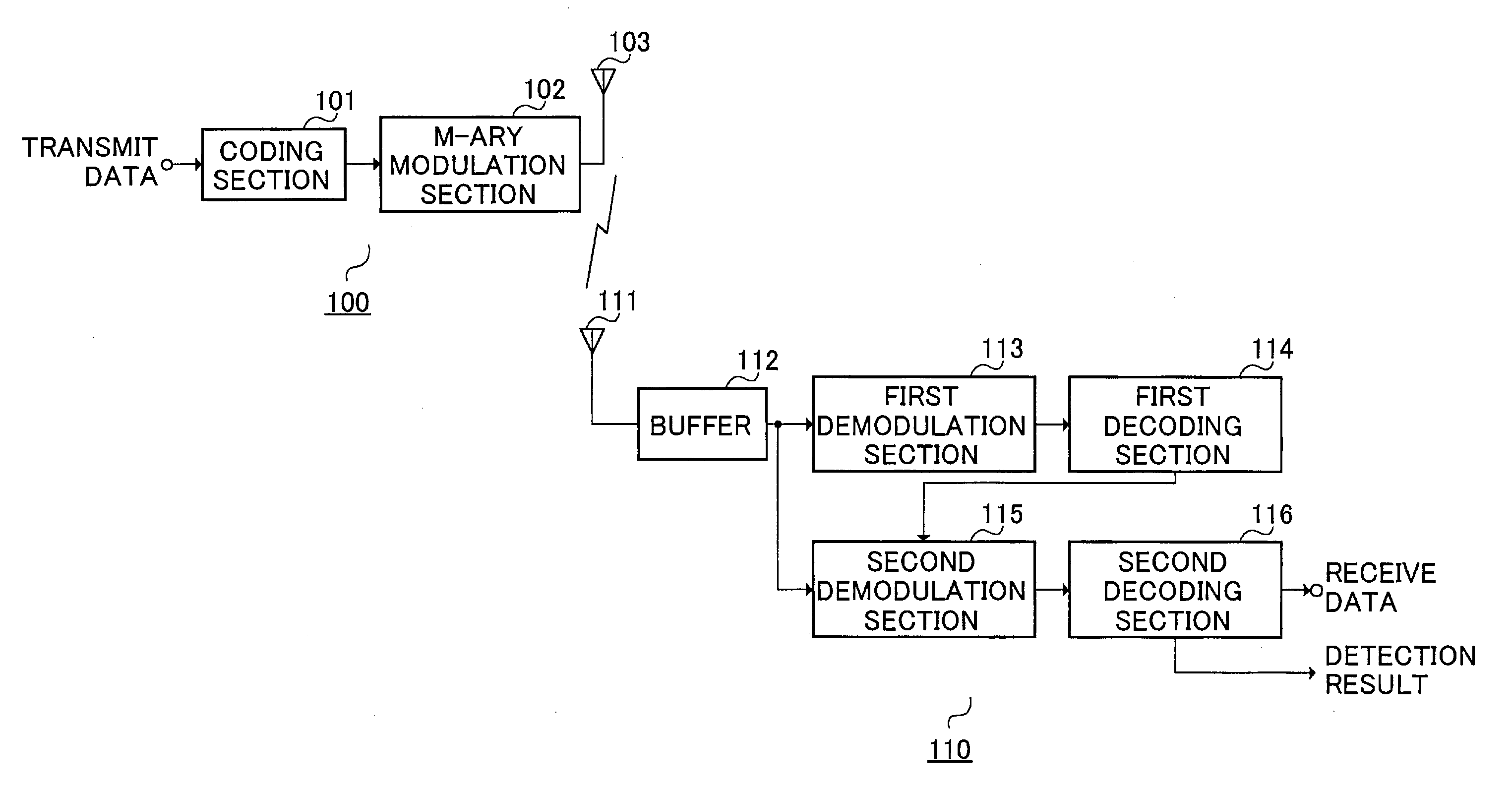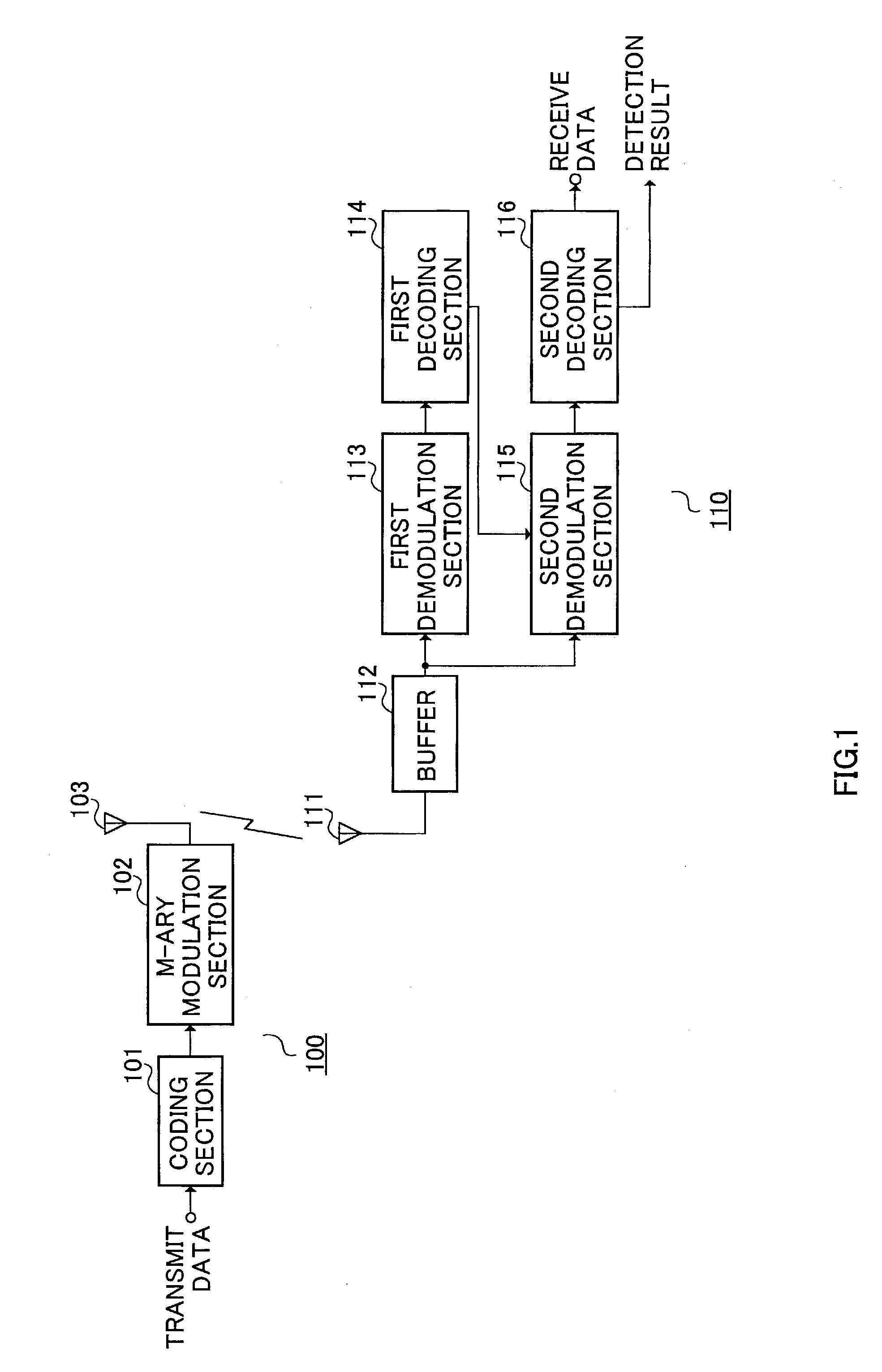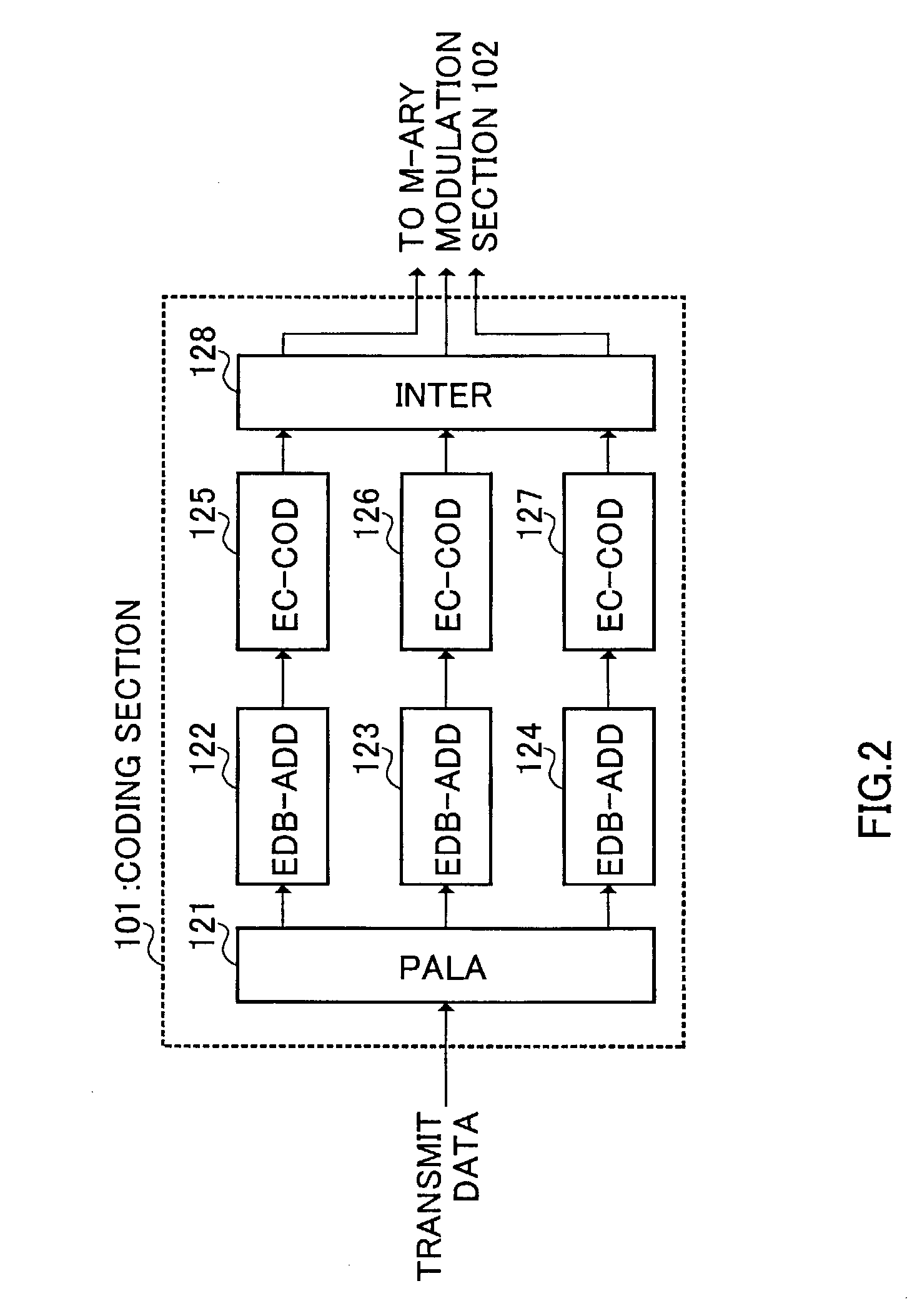Digital radio communication system for communicating M-ary modulated error detection units
a digital radio communication and error detection technology, applied in phase-modulated carrier systems, instruments, coding, etc., can solve the problems of difficult determination of reception signal point and likelihood calculation, deterioration of reception characteristics, etc., to improve error correction capability, improve reception characteristics, and high precision
- Summary
- Abstract
- Description
- Claims
- Application Information
AI Technical Summary
Benefits of technology
Problems solved by technology
Method used
Image
Examples
embodiment 1
(Embodiment 1)
[0096]FIG. 1 is a block diagram showing the configuration of a radio communication system according to Embodiment 1 of the present invention. In the radio communication system shown in FIG. 1, radio communications are performed between a transmitting apparatus 100 and receiving apparatus 110. Unless indicated otherwise, in the following embodiments a case in which 8PSK is performed will be described by way of example.
[0097]In the transmitting apparatus 100, a coding section 101 performs error detection coding of transmit data for each predetermined error detection unit, and performs error correction coding for each predetermined error correction unit. An M-ary modulation section 102 performs M-ary modulation of the output signal from the coding section 101, and performs radio transmission of this signal from an antenna 103.
[0098]In the receiving apparatus 110, a signal received from an antenna 111 is first stored in a buffer 112, and then output to a first demodulation...
embodiment 2
(Embodiment 2)
[0124]Embodiment 2 of the present invention is a variant of Embodiment 1, and describes a case in which a plurality of error detection units are taken together as one error correction unit.
[0125]FIG. 6 is a block diagram showing the configuration of a radio communication system according to Embodiment 2 of the present invention. In the radio communication system shown in FIG. 6, radio communications are performed between a transmitting apparatus 200 and receiving apparatus 210. In the transmitting apparatus 200, the configuration of the coding section 201 differs from that of the coding section 101 shown in FIG. 1, and in the receiving apparatus 210, the first decoding section 214 and second decoding section 216 differ from the first decoding section 114 and second decoding section 116 shown in FIG. 1.
[0126]FIG. 7 is a block diagram showing the internal configuration of the coding section 201 of the transmitting apparatus 200 shown in FIG. 6. Parts in FIG. 7 identical ...
embodiment 3
(Embodiment 3)
[0132]Embodiment 3 of the present invention is a variant of Embodiment 1, and describes a case in which the number of independent error detection units contained in one symbol is made identical to the number of bits arranged in one symbol by providing error detection units that differ according to the bit position, and performing interleaving for each error detection unit.
[0133]FIG. 10 is a block diagram showing the configuration of a radio communication system according to Embodiment 3 of the present invention. In the radio communication system shown in FIG. 10, radio communications are performed between a transmitting apparatus 300 and receiving apparatus 310. In the transmitting apparatus 300, the configuration of the coding section 301 differs from that of the coding section 101 shown in FIG. 1, and in the receiving apparatus 310, the first decoding section 314 and second decoding section 316 differ from the first decoding section 114 and second decoding section 11...
PUM
 Login to View More
Login to View More Abstract
Description
Claims
Application Information
 Login to View More
Login to View More - R&D
- Intellectual Property
- Life Sciences
- Materials
- Tech Scout
- Unparalleled Data Quality
- Higher Quality Content
- 60% Fewer Hallucinations
Browse by: Latest US Patents, China's latest patents, Technical Efficacy Thesaurus, Application Domain, Technology Topic, Popular Technical Reports.
© 2025 PatSnap. All rights reserved.Legal|Privacy policy|Modern Slavery Act Transparency Statement|Sitemap|About US| Contact US: help@patsnap.com



